
Čestmír and Lubomír Šlapetové
With devastating regularity, a late autumn functionalist-retrospective exhibition organized by the Obecní dům Brno architects' association is held year after year at the Brno Gallery of Architecture. The current Brno architectural establishment has joined forces this year with the Olomouc Museum of Art to present the previously overlooked work of the Šlapeta brothers in our country.
The phenomenon of our post-revolutionary architectural theory has become - according to Zdeněk Lukeš's terminology - "repayment of debts." After settling accounts with Jewish, German, art historians unaware, and communist-persecuted architects and builders, it was finally time for the architectural periphery. Interest in the periphery can be observed in recent years in the writings of leading Czech architects and art theorists, and this is only good. A sufficient distance from the center offers an interesting uncontaminated reflection of current architectural trends supplemented by a unique context. The Šlapeta exhibition and catalog will only confirm this.
The exhaustive presentation of these two unique phenomena in the history of Czech architecture is based on a rich archive and careful research work by Lubomír Šlapeta's son Vladimír, currently the dean of the Prague Faculty of Architecture CTU. Besides the main text in the catalog, Vladimír Šlapeta is also the author of the exhibition design, which reflects his long-standing experience in the field of architectural presentation. The exhibition offers visitors a number of original sketches and drawings, examples of furniture, and excellent models from the Prague modeling workshop Jeník. Together with the summer Dutch exhibition by MVRDV, the Šlapetas represent positive moments at the Brno Gallery of Architecture.
The first panels of the exhibition are dedicated to the maturation and architectural growth of both brothers. The first designs complement the architectural works of their teachers from the academy in Wrocław - Hans Scharoun and Adolf Rading. It was precisely the time spent in Scharoun's studio that influenced both brothers for their entire lives. Thanks to his influence, they brought the rational functionalism of German expression and dynamism into the Czech and Moravian environment. A fortunate step in their lives was also a trip to America, where they met most of the significant personalities of that time. With the knowledge they gained, they were able to publish their articles in specialized magazines and speak on the radio upon returning home, which catalyzed their careers. Besides the publishing catalyst, the good social connections of the Šlapeta family in the northern Moravia region also played a role, resulting in them obtaining almost all their commissions in that area.
In the 1930s, the existing middle social class was the main clientele of the Šlapeta brothers. Many designs for family houses and villas allowed the architects to create a cohesive view of the typological type of family housing. Today, it seems incredible that so many knowledgeable and accommodating clients appeared on the periphery of Moravia and Silesia. The work of the Šlapetas remains an unparalleled local phenomenon, and their works excite generation after generation of architects. Projects and realizations of residential buildings take up more than half of the exhibition panels.
Later, interest in housing questions was joined by a fascination with the issues of theaters and concert halls. Unfortunately, in this architectural sector, the Šlapetas did not see a key realization despite the undeniable quality of their studies and competition projects. It was World War II and the subsequent rise of the communists to power that interrupted the promising careers of the most talented Czech architects of the first half of the 20th century. Endless obstacles and complications prevented both brothers from promoting cosmopolitan views on architecture, and it is almost a miracle that Lubomír Šlapeta was able to visit his beloved teacher Hans Scharoun again in the 1960s and realize an excellent church pavilion in Tichá near Frenštát pod Radhoštěm in the 1970s.
The limited space of the exhibition obviously does not allow for the presentation of all projects by both brothers; however, the comprehensive catalog accompanying the exhibition overcomes this handicap. The life stories of the Šlapeta twins are unique testimonies of the time in which they lived. Even after many decades, their architectural legacy remains relevant and inspiring for aspiring architects. It is incredible that at an age when most architects are just beginning to study this complex field, the Šlapeta brothers had already realized their first buildings. The pinnacle works - the villas of MUDr. Kremer in Hlučín, industrialist Nakládal in Olomouc, and JUDr. Liska in Ostrava - were designed by Lubomír Šlapeta at the mere age of 28! The subsequent events have turned the beautiful story of the Šlapeta brothers into a swan song. I believe that the ongoing exhibition and the excellent accompanying catalog provide the satisfaction that both creators have deserved after many years of repression.
> Museum of Art Olomouc
> Obecní dům Brno
The phenomenon of our post-revolutionary architectural theory has become - according to Zdeněk Lukeš's terminology - "repayment of debts." After settling accounts with Jewish, German, art historians unaware, and communist-persecuted architects and builders, it was finally time for the architectural periphery. Interest in the periphery can be observed in recent years in the writings of leading Czech architects and art theorists, and this is only good. A sufficient distance from the center offers an interesting uncontaminated reflection of current architectural trends supplemented by a unique context. The Šlapeta exhibition and catalog will only confirm this.
The exhaustive presentation of these two unique phenomena in the history of Czech architecture is based on a rich archive and careful research work by Lubomír Šlapeta's son Vladimír, currently the dean of the Prague Faculty of Architecture CTU. Besides the main text in the catalog, Vladimír Šlapeta is also the author of the exhibition design, which reflects his long-standing experience in the field of architectural presentation. The exhibition offers visitors a number of original sketches and drawings, examples of furniture, and excellent models from the Prague modeling workshop Jeník. Together with the summer Dutch exhibition by MVRDV, the Šlapetas represent positive moments at the Brno Gallery of Architecture.
The first panels of the exhibition are dedicated to the maturation and architectural growth of both brothers. The first designs complement the architectural works of their teachers from the academy in Wrocław - Hans Scharoun and Adolf Rading. It was precisely the time spent in Scharoun's studio that influenced both brothers for their entire lives. Thanks to his influence, they brought the rational functionalism of German expression and dynamism into the Czech and Moravian environment. A fortunate step in their lives was also a trip to America, where they met most of the significant personalities of that time. With the knowledge they gained, they were able to publish their articles in specialized magazines and speak on the radio upon returning home, which catalyzed their careers. Besides the publishing catalyst, the good social connections of the Šlapeta family in the northern Moravia region also played a role, resulting in them obtaining almost all their commissions in that area.
In the 1930s, the existing middle social class was the main clientele of the Šlapeta brothers. Many designs for family houses and villas allowed the architects to create a cohesive view of the typological type of family housing. Today, it seems incredible that so many knowledgeable and accommodating clients appeared on the periphery of Moravia and Silesia. The work of the Šlapetas remains an unparalleled local phenomenon, and their works excite generation after generation of architects. Projects and realizations of residential buildings take up more than half of the exhibition panels.
Later, interest in housing questions was joined by a fascination with the issues of theaters and concert halls. Unfortunately, in this architectural sector, the Šlapetas did not see a key realization despite the undeniable quality of their studies and competition projects. It was World War II and the subsequent rise of the communists to power that interrupted the promising careers of the most talented Czech architects of the first half of the 20th century. Endless obstacles and complications prevented both brothers from promoting cosmopolitan views on architecture, and it is almost a miracle that Lubomír Šlapeta was able to visit his beloved teacher Hans Scharoun again in the 1960s and realize an excellent church pavilion in Tichá near Frenštát pod Radhoštěm in the 1970s.
The limited space of the exhibition obviously does not allow for the presentation of all projects by both brothers; however, the comprehensive catalog accompanying the exhibition overcomes this handicap. The life stories of the Šlapeta twins are unique testimonies of the time in which they lived. Even after many decades, their architectural legacy remains relevant and inspiring for aspiring architects. It is incredible that at an age when most architects are just beginning to study this complex field, the Šlapeta brothers had already realized their first buildings. The pinnacle works - the villas of MUDr. Kremer in Hlučín, industrialist Nakládal in Olomouc, and JUDr. Liska in Ostrava - were designed by Lubomír Šlapeta at the mere age of 28! The subsequent events have turned the beautiful story of the Šlapeta brothers into a swan song. I believe that the ongoing exhibition and the excellent accompanying catalog provide the satisfaction that both creators have deserved after many years of repression.
> Museum of Art Olomouc
> Obecní dům Brno
The English translation is powered by AI tool. Switch to Czech to view the original text source.
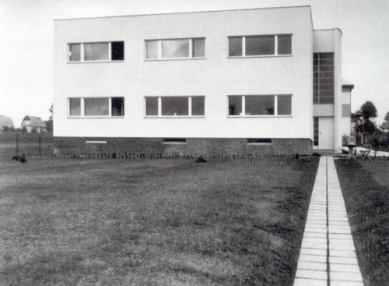
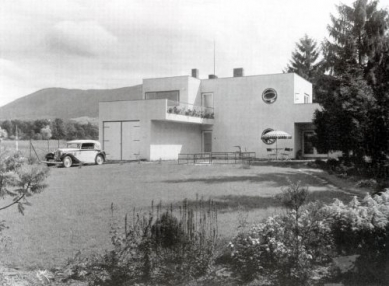

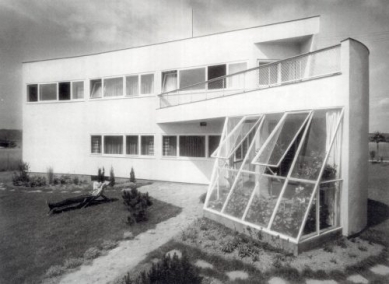
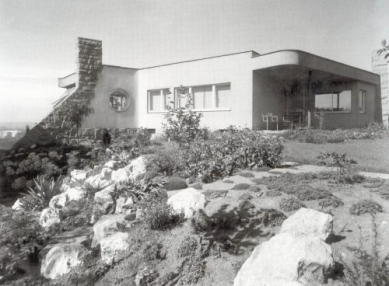
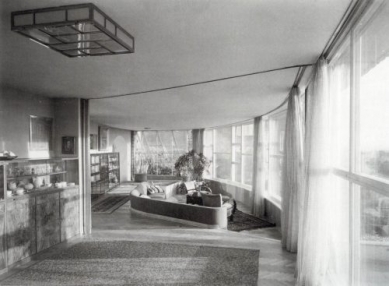
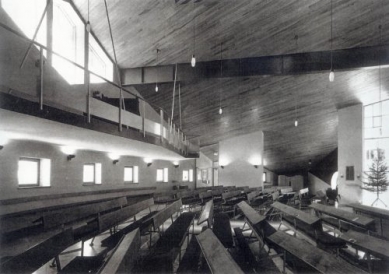
0 comments
add comment











